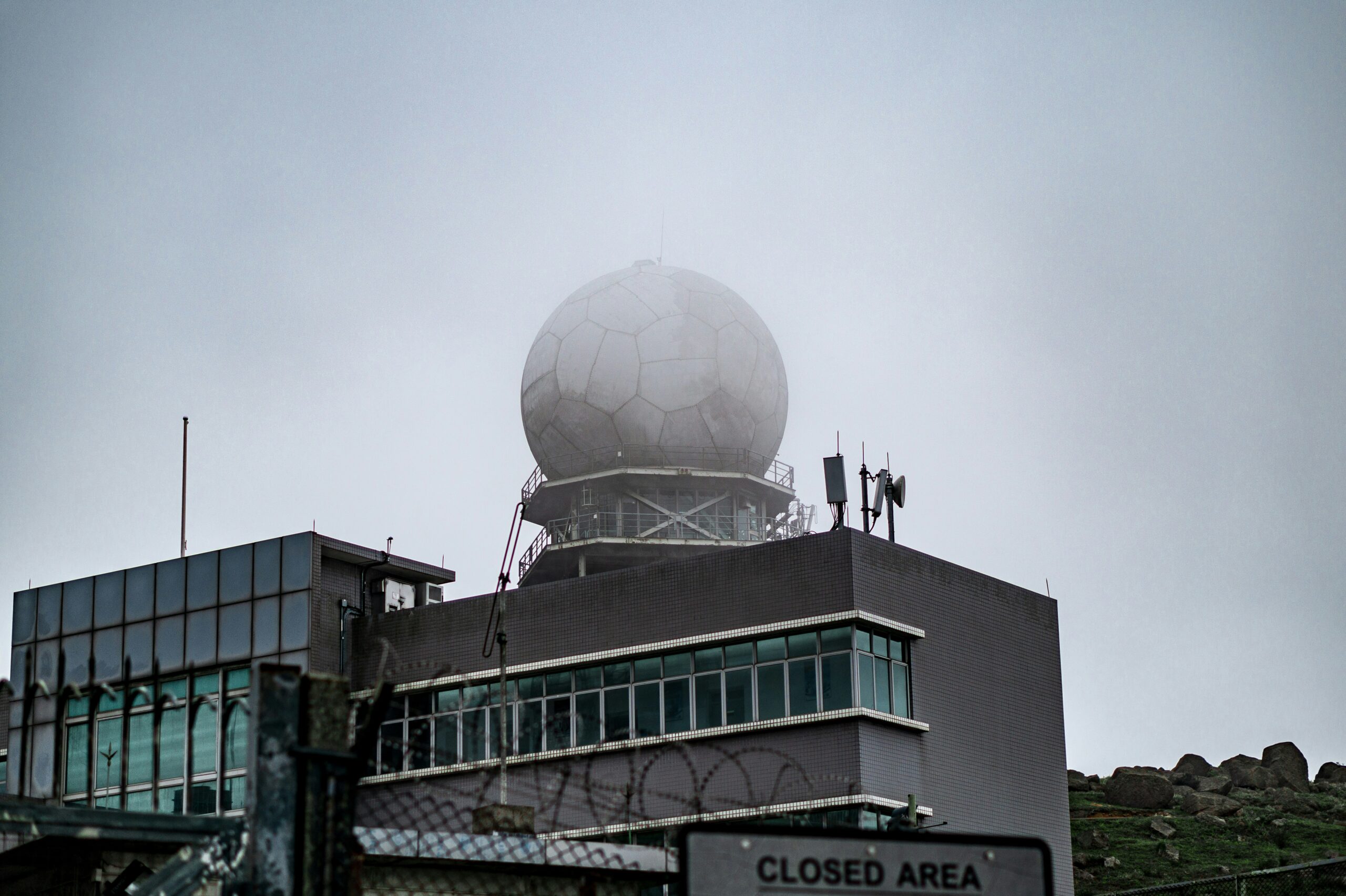Introduction to Severe Weather Alerts
Severe weather alerts play a critical role in safeguarding public safety, providing real-time information that can help prevent damage, and save lives. Issued by meteorological agencies, these alerts cover a range of extreme weather conditions, including storms, floods, hurricanes, tornadoes, and heatwaves. Each type of severe weather alert is designed to inform the public about imminent threats and provide guidelines on how to stay safe.
There are several categories of severe weather alerts, each indicating different levels of urgency and potential impact. A watch signals that severe weather conditions are possible within the area, giving individuals time to prepare and stay informed. A warning, on the other hand, indicates that severe weather conditions are imminent or already occurring, necessitating immediate action to ensure safety. Lastly, an advisory suggests that weather conditions might become hazardous but are not expected to reach the severity of a warning.
The importance of severe weather alerts cannot be overstated. These alerts are essentially lifelines, providing communities with the necessary information to take preemptive measures against potentially devastating weather events. They assist in decision-making processes, such as whether to evacuate, seek shelter, or take other protective actions. It’s crucial not only to understand the different types of alerts but also to monitor them continuously through reliable channels such as weather radios, mobile apps, and official government websites.
By understanding and responding appropriately to severe weather alerts, individuals and communities can significantly mitigate the risks associated with extreme weather conditions. Awareness and preparedness are key elements in minimizing the potential for injury, property damage, and even loss of life. Therefore, staying informed and understanding the different types of severe weather alerts becomes an essential part of personal and collective safety strategies.
Understanding the key differences between a severe thunderstorm warning and a severe thunderstorm watch is crucial for staying safe during adverse weather conditions. These terms are often used interchangeably by the public, but they have distinct meanings and implications. A severe thunderstorm watch signals that conditions are favorable for the development of severe thunderstorms in and around the watch area. This means that while severe weather is possible, it is not yet occurring. Watches are typically issued several hours in advance and cover large geographic areas. The criteria for issuing a severe thunderstorm watch include the likelihood of high winds, hail, and torrential rainfall that can lead to flash flooding.
On the other hand, a severe thunderstorm warning is issued when a severe thunderstorm has either been detected by radar or reported by spotters. This indicates that severe weather is currently occurring or imminent in the warning area. Warnings are generally localized to a smaller area and have a shorter duration, typically lasting from 30 minutes to an hour. The primary conditions that merit a severe thunderstorm warning include wind speeds of 58 miles per hour or greater, hail one inch in diameter or larger, and the possibility of tornadoes.
When a severe thunderstorm watch is in effect, people should remain alert to changing weather conditions and be prepared to take action should a severe thunderstorm warning be issued. Recommended actions include reviewing safety plans, ensuring access to weather updates, and identifying safe structures to take shelter in if necessary. Conversely, when a severe thunderstorm warning is active, immediate action is required. This includes seeking shelter in a sturdy building, staying away from windows, and avoiding using electrical appliances.
By understanding these distinctions and the recommended precautions, individuals can better protect themselves and their loved ones from the dangers posed by severe thunderstorms. Staying well-informed through reliable weather sources helps ensure timely and appropriate responses during such events.
Understanding Excessive Heat Warnings
Excessive heat warnings are issued by meteorological authorities when the forecasted temperatures are exceptionally high, posing a risk to public health and safety. These warnings are critical for alerting the populace about imminent dangers associated with extreme heat conditions. Typically, an excessive heat warning is issued when the heat index—a measure of how hot it feels when relative humidity is factored in with the actual air temperature—reaches dangerously high levels, often surpassing 105°F (40°C) for an extended period.
The physiological impacts of excessive heat can be severe. Heat-related illnesses such as heat exhaustion and heatstroke can occur, leading to symptoms like dizziness, headache, rapid heartbeat, and in extreme cases, loss of consciousness. Vulnerable populations, including the elderly, children, and individuals with preexisting conditions, are at a heightened risk. Additionally, high temperatures can exacerbate chronic health issues such as cardiovascular and respiratory diseases.
To mitigate the risks associated with excessive heat warnings, several precautionary measures can be adopted. Staying hydrated is paramount; it is advisable to drink plenty of water and avoid alcohol or caffeinated beverages. It’s also crucial to limit outdoor activities, particularly during peak heat hours between 10 AM and 4 PM. Seeking refuge in air-conditioned environments, whether at home, public places like malls, or community cooling centers, can significantly reduce heat exposure.
Dressing appropriately in lightweight, loose-fitting clothing and using sunscreens with high SPF can help protect against the harsh effects of the sun. Additionally, taking cool showers or baths can lower body temperature. For those working outdoors, frequent breaks in shaded or cool areas are essential. Monitoring weather updates and adhering to local authorities’ guidance during excessive heat warnings can go a long way in preventing heat-related health issues and ensuring safety.
The National Weather Service (NWS) radar is an invaluable tool in monitoring and predicting severe weather events. By utilizing advanced Doppler radar technology, meteorologists can gather critical data on atmospheric conditions and provide timely alerts to the public. Understanding how these radar systems operate offers insight into their pivotal role in weather forecasting.
Doppler radar technology operates on the principle of the Doppler effect, which measures the change in frequency or wavelength of waves relative to a moving object. In the context of weather radar, the radar dish emits radio waves that bounce off precipitation particles in the atmosphere. By analyzing the returned signal, meteorologists can determine the speed and direction of the precipitation. This data is fundamental in identifying the severity and movement of weather patterns.
NWS radar systems produce several types of data. One of the most significant outputs is reflectivity, which measures the intensity of the returned signal. Higher reflectivity indicates heavier precipitation or denser cloud structures, which are often associated with severe weather. Velocity data, another key output, shows the motion of particles toward or away from the radar, aiding in the detection of wind patterns, tornadoes, and other severe phenomena.
Additionally, Doppler radar provides dual-polarization capabilities, offering more detailed information by sending out waves both horizontally and vertically. This advancement enables the differentiation between types of precipitation, such as rain, snow, and hail, enhancing the accuracy of weather predictions. Moreover, dual-polarization radar can help detect debris in the atmosphere, which is particularly useful for identifying tornadoes.
In essence, the integration of Doppler radar technology within the National Weather Service radar network is crucial for real-time weather monitoring. This sophisticated technology not only helps forecasters track storm development but also equips the public with essential information to make informed decisions during severe weather events. By remaining aware of how these systems function, individuals can better appreciate the science behind weather alerts and the importance of staying informed.
Tornado Watches and Warnings: Key Differences and Safety Measures
Understanding the distinctions between a tornado watch and a tornado warning is crucial for effective preparedness and response. A tornado watch is issued when weather conditions are favorable for the formation of tornadoes within the next several hours. This is essentially a heads-up that severe weather conditions may develop, covering a broader area. Residents in the watch zone should stay updated on weather conditions and be ready to take action if the situation escalates.
Conversely, a tornado warning is a more urgent alert, signifying that a tornado has been sighted or indicated by weather radar. Warnings are typically for smaller, more specific areas, reflecting an immediate threat to life and property. When a tornado warning is announced, individuals should seek shelter immediately, preferably in a basement or an interior room on the lowest floor, away from windows.
The conditions leading to these alerts often involve severe thunderstorms, characterized by high winds, large hail, and significant atmospheric instability. Tornado formation is influenced by a combination of temperature, humidity, and wind patterns. Meteorologists utilize advanced radar and satellite technologies to monitor these conditions and issue timely alerts.
For personal safety during a tornado watch, individuals should secure outdoor objects that could become projectiles and ensure that they have quick access to a flashlight, batteries, and a reliable means of receiving weather updates. During a tornado warning, immediate actions include moving to a pre-designated storm shelter, covering oneself with a mattress or heavy blankets for protection against flying debris, and avoiding elevators, as power outages may trap individuals inside.
Communities play a pivotal role in preparedness by conducting tornado drills, designing effective emergency plans, and educating the public on responding to tornado threats. Local authorities may also equip public spaces with storm shelters and utilize sirens to alert residents. Overall, understanding the differences between a tornado watch and a tornado warning, along with adhering to recommended safety measures, significantly reduces the risk of injury and enhances community resilience.
Navigating Local Weather Radars: A Guide to Wunderground and WTHR
Local weather radars, such as Wunderground and WTHR, are indispensable tools for real-time weather monitoring. They provide precise, localized data allowing residents to stay informed of any changes in weather conditions. Understanding how to access and interpret the data from these radars can significantly enhance one’s ability to respond promptly to severe weather alerts.
Wunderground, also known as Weather Underground, offers a comprehensive radar map interface that is both user-friendly and detailed. To access Wunderground’s radar, navigate to their website or mobile app and enter your location. The radar map will display various weather patterns including precipitation, storms, and temperature changes. Users can zoom in for more detailed local information or pan out for a regional overview. Wunderground also provides layers such as radar, satellite, and severe weather alerts, which can be toggled based on the user’s preference.
When interpreting Wunderground’s radar data, it is crucial to understand the color-coded system. For instance, green areas indicate light precipitation, yellow to orange areas depict moderate to heavy rainfall, and red areas signify intense weather conditions such as thunderstorms. By monitoring these indicators, users can gauge the severity and movement of weather formations and make informed decisions about safety measures.
Similarly, WTHR, a prominent weather service provider, offers reliable local radar access through its website and mobile application. Upon launching the WTHR radar, users input their desired location to view a detailed radar display. The interface is straightforward, providing clear visuals of current weather phenomena. Like Wunderground, WTHR radar uses color coding to indicate varying levels of precipitation and storm activity. Additionally, WTHR’s radar includes critical information on weather warnings and alerts, making it easier for users to stay ahead of severe weather developments.
By leveraging the capabilities of Wunderground and WTHR radars, individuals can enhance their preparedness for severe weather events. The accurate and timely data provided by these platforms empowers users to track weather conditions in real-time, ensure personal safety, and plan accordingly. Regular use of these tools facilitates a proactive approach to weather monitoring and alert management, crucial in mitigating the impact of adverse weather conditions.
Severe Weather Outlook and the Storm Prediction Center
The Storm Prediction Center (SPC) plays a pivotal role in safeguarding the public by issuing severe weather outlooks. As a branch of the National Weather Service (NWS), the SPC is tasked with monitoring and predicting severe weather phenomena across the United States. Utilizing state-of-the-art meteorological tools and data analytics, the SPC provides critical information about potential weather threats, enabling communities to prepare adequately for imminent hazards.
The SPC’s severe weather outlooks categorize the risk of severe weather into five distinct levels. These categories range from ‘Marginal’ to ‘High.’ A Marginal risk indicates isolated severe storms that are typically limited in duration and intensity, while a High risk signifies an outbreak of widespread, long-lived, and often intense severe storms. These categories are based on a thorough analysis that includes the likelihood of tornadoes, damaging winds, and large hail.
Understanding these risk levels is paramount for making informed decisions. With a Marginal risk, the impact might be minimal; however, even a slight risk urges vigilance. As the risk level escalates to Slight, Enhanced, Moderate, and High, the threat becomes more significant, necessitating heightened awareness and preparedness measures. These outlooks offer advanced warnings by highlighting areas expected to experience severe weather within the next one to three days, empowering local authorities and residents to take preventative actions.
Moreover, the SPC’s detailed outlooks are continuously updated as new data becomes available. They offer an essential temporal and spatial perspective on severe weather threats. Whether it is an imminent tornado outbreak or a severe thunderstorm, the SPC’s projections assist meteorologists, emergency managers, and the public in mitigating risks through timely and accurate information.
In essence, the collaboration between the SPC and local agencies leads to better preparedness, reduced property damage, and, most importantly, the preservation of lives. By understanding the forecast mechanisms and risk categories employed by the SPC, individuals and communities are better equipped to respond effectively to severe weather threats.
Staying Informed: Using Live Weather Radars for Real-Time Updates
Utilizing live weather radars is an essential component of staying informed during severe weather events. These tools provide real-time updates that allow individuals to make informed decisions regarding safety and preparedness. Sources for live weather radar access are widely available and can cater to specific locations, ensuring precise and relevant information.
For instance, residents of Indianapolis can utilize local meteorological websites or applications to access live weather radar specifically tailored to their region. Websites such as Weather.com and local news outlets offer continuously updated radar images, detailing precipitation, storm movement, and weather patterns. Similarly, those in Knoxville can rely on resources including the National Weather Service’s online portal and local TV station apps that deliver current radar visuals and severe weather alerts.
Evansville residents are not left out, as they too have access to accurate and up-to-the-minute radar information through local weather services and digital applications. These radars pinpoint severe weather activities and provide essential data on factors like wind speed, precipitation levels, and storm trajectories. Whether using desktop websites, smartphone apps, or even social media updates, the accessibility of real-time weather radar ensures that the public can stay well-informed.
Staying informed can make a significant difference during severe weather events, where timely information is crucial for safety. By making use of live weather radar services, one can monitor changing weather conditions, receive alerts for potential hazards, and take necessary actions proactively. Ensuring that you have reliable sources for weather updates, particularly those offering specialized regional information, is indispensable.
Ultimately, the use of live weather radars serves as a critical tool in severe weather preparedness, providing the insights needed to safeguard oneself and loved ones. Whether you are in Indianapolis, Knoxville, or Evansville, make sure you have easy access to live radar updates for the most effective and timely weather information.



